G39 ✿ Ancestors are Here
“Every breath ever taken is still in the air to breathe. I breathe the breaths of the Ancestors, and everybody else’s too. Always was, always is, always will be.”
Tyson Yunkaporta, Sand Talk
The second issue in our Storylines series features objects that keep alive connections to the generations whose world we have inherited.
The past is not past. We are conditioned to see history as incremental progress, where the present is necessarily more enlightened and more knowledgeable than the past. While this reflects a positive striving to advance, it can encourage disdain for those who came before. But this denies the debt we inherit, not least in the language we speak and the stories we tell.
By acknowledging this debt, we can reflect on the legacy that our own generation will leave. Many cultures express gratitude in festivals and rituals that reconnect with ancestors. However, in modern life, the past is often relegated to neglected cemeteries and dusty photo albums. The culture-makers in this issue find ways of giving presence to those no longer with us. The stories acknowledge the value of what has been passed down, including craft techniques, tales, inspiring deeds, and heirlooms. This involves translating the past into today’s language. Our new materials and techniques can help keep this connection alive for future generations.
As well as the makers who have generously shared their stories, special thanks to Rosa Cass-Simpson, Shivani Gandhi, Melinda Rankin Nabil Qaduumi, Teiren Taka, and Shirabe Yamada.
Threads across time
- Three dresses rescued from Rafah: Palestinian culture hangs by a thread by Amer Shomali, Sunbula & Rachel Dedman
- Laurie Paine ✿ Weaving a lost homeland by Laurie Paine
- Interweaving the archive: A homage to brave women by Colectiva Tramando
- Abantu: Threads That Bind Us by Khanya Mthethwa
- Stitching memory: How Siddi women in India preserve memory through quilting by Shrey Maurya
- Weaving Matter: Handing down the language of textiles by Inga Walton
- Verweban: A textile homage to the “somebodies” in textile factories by Flossie Peitsch
- Pashmina: An ancestral legacy in the machine age by Fiba Arif & Irfan Ahmad
Ancestral encounters
- Niloufar Lovegrove ✿ Hands full of wisdom by Pamela See
- Righting the record: Sancintya Mohini Simpson by Elena Dias-Jayasinha
- Ègbáliganza 2025: Traditional regalia honours of the ancestors by Emmanuel Solate
- In search of the fili: A workshop for encountering ancestors by Colm McNaughton
- Decennial universal soul salvation during Singapore’s Hungry Ghost Month by Angela Sim
- Deep roots: Chinese Peranakan heritage in Java by Janet Teowarang
- The fabric of migration by Lella Cariddi
- The art of Bahi Khata: India’s handwritten legacy of accounts and ancestry by Priyanka Kochar
From the earth
- Takashi Wakamiya ✿ Lacquer master and founder of Hikoju Makie by Bic Tieu
- Finding Vomit Girl: A pilgrimage to the source of mộc mạc by Mai Nguyen-Long
- The guardian tiger: Ancestral protection by Nani Puspasari
- The tale of Nneburube by Ngozi Omeje
- Nonna’s Abundant Protection from the Malocchio by Celine Babet
- Data archeology in clay by Guillaume Slizewicz
- Stories, theatre and worship: The sacred masks of Majuli by Aishani Gupta
Contemporary currents
- A driftwood testament by Dean Greeno
- Mobile ancestral hall by Tammy Wong
- The NFT Mother of God by Emma Cieslik
- Woven in stone: Bringing ancient Indonesia to life on the loom by Bernhard Bart
- The Rest of Us: Soft publishing as an act of radical care by Justy Philips
- Ramayana Reimagined: A tale with a thousand voices by Natasha Sarka
- A Handmade’s Tale by D Wood
✿
 This issue is dedicated to the memory of Takashi Wakamiya (1964–2025), lacquer master and founder of the Hikoju Makie studio in Wajima, Japan.
This issue is dedicated to the memory of Takashi Wakamiya (1964–2025), lacquer master and founder of the Hikoju Makie studio in Wajima, Japan.
✿
 The Guardian Tiger: Ancestral Protection - Nani Puspasari is able to reconnect with her ancestors through ceramic installations that evoke time with grandparents.
The Guardian Tiger: Ancestral Protection - Nani Puspasari is able to reconnect with her ancestors through ceramic installations that evoke time with grandparents. Finding Vomit Girl: A pilgrimage to the source of mộc mạc - Mai Nguyễn-Long takes on her journey to discover her lost connection to village culture in Vietnam.
Finding Vomit Girl: A pilgrimage to the source of mộc mạc - Mai Nguyễn-Long takes on her journey to discover her lost connection to village culture in Vietnam.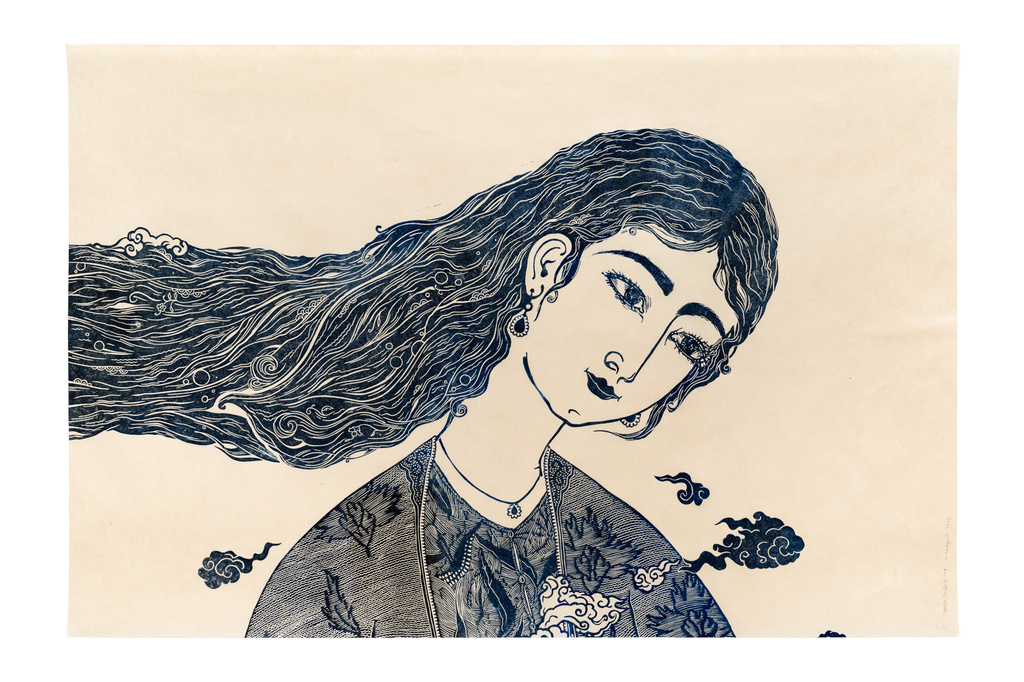 Niloufar Lovegrove ✿ Hands full of wisdom - For Pamela See, the gestures of Persian Australian artist Niloufar Lovegrove (Pishva) demonstrate a self-reliant reverence for nature.
Niloufar Lovegrove ✿ Hands full of wisdom - For Pamela See, the gestures of Persian Australian artist Niloufar Lovegrove (Pishva) demonstrate a self-reliant reverence for nature. The tale of Nneburube - Ngozi Omeje incarnates the matriarchal Igbo story of the circle of connections that make a community.
The tale of Nneburube - Ngozi Omeje incarnates the matriarchal Igbo story of the circle of connections that make a community.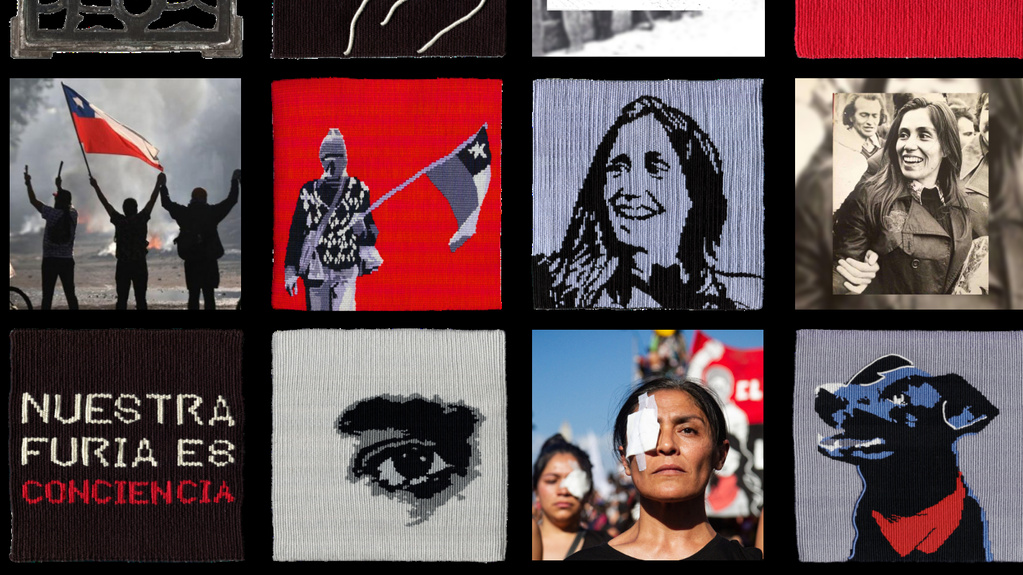 Interweaving the archive: A homage to brave women - A Chilean collective has woven tapestries that honour the struggle for justice led by women
Interweaving the archive: A homage to brave women - A Chilean collective has woven tapestries that honour the struggle for justice led by women Stitching memory: How Siddi women in India preserve memory through quilting - Illustrated with photos by Anitha Reddy, Shrey Maurya from the MAP Academy writes about Indian women of African descent who use their quilting heritage to create a textile map of Bangalore for Atlassian.
Stitching memory: How Siddi women in India preserve memory through quilting - Illustrated with photos by Anitha Reddy, Shrey Maurya from the MAP Academy writes about Indian women of African descent who use their quilting heritage to create a textile map of Bangalore for Atlassian. Weaving Matter: Handing down the language of textiles - Inga Walton reviews an exhibition curated by the late Liz Williamson that showcased the unique language of textiles.
Weaving Matter: Handing down the language of textiles - Inga Walton reviews an exhibition curated by the late Liz Williamson that showcased the unique language of textiles.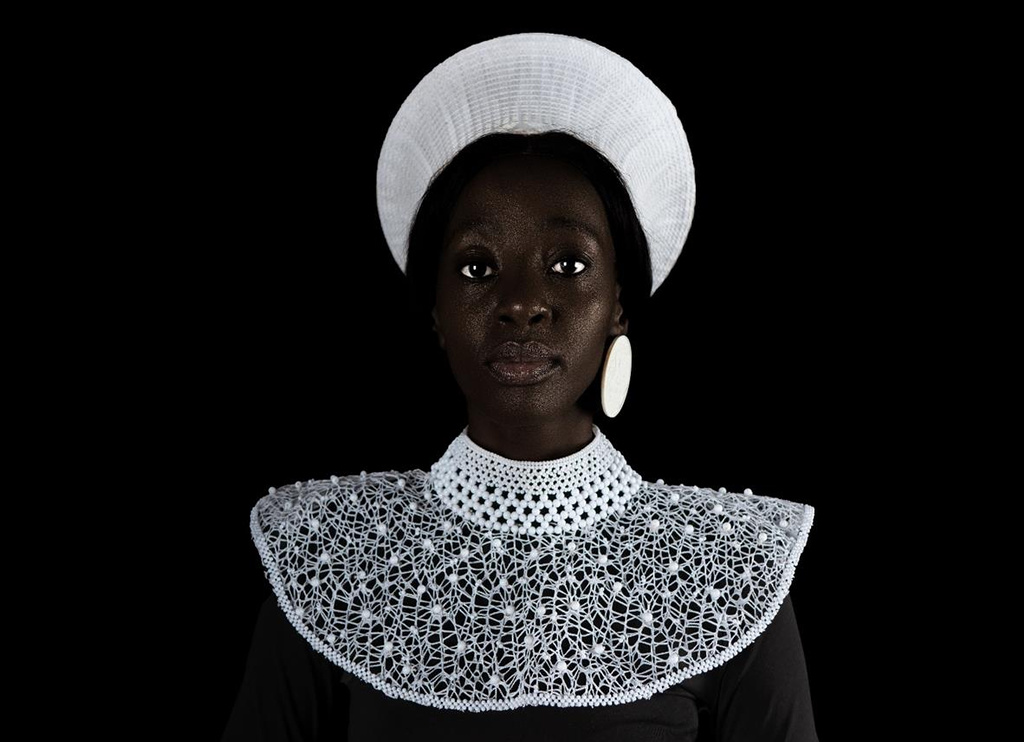 Abantu: Threads That Bind Us - Khanya Mthethwa honours three ancestors of the Xhosa, BaPedi and Zulu peoples in embroidered portraits and personal adornment.
Abantu: Threads That Bind Us - Khanya Mthethwa honours three ancestors of the Xhosa, BaPedi and Zulu peoples in embroidered portraits and personal adornment. Three dresses rescued from Rafah: Palestinian culture hangs by a thread - While Amer Shomali describes the dramatic rescue of three dresses from Rafah, Sunbula reports on the current state of embroiderers in Gaza and Rachel Dedman reflects on a touring exhibition of tatreez from the Palestinian Museum.
Three dresses rescued from Rafah: Palestinian culture hangs by a thread - While Amer Shomali describes the dramatic rescue of three dresses from Rafah, Sunbula reports on the current state of embroiderers in Gaza and Rachel Dedman reflects on a touring exhibition of tatreez from the Palestinian Museum.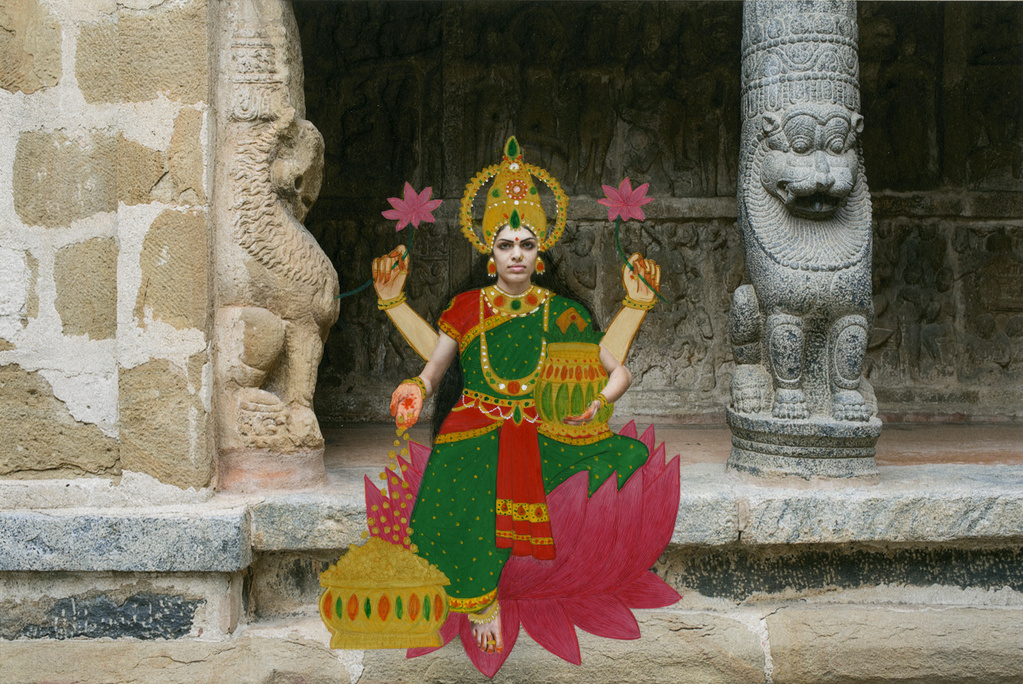 Righting the record: Sancintya Mohini Simpson - Elena Dias-Jayasinha learns about an artist who honours a matrilineal history of struggle as displaced, indentured labourers.
Righting the record: Sancintya Mohini Simpson - Elena Dias-Jayasinha learns about an artist who honours a matrilineal history of struggle as displaced, indentured labourers.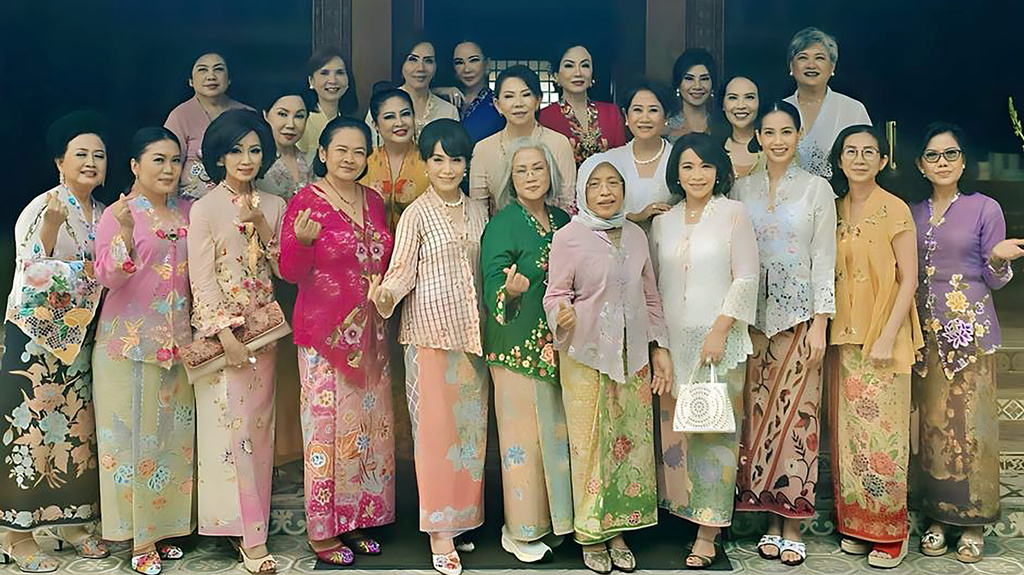 Deep roots: Chinese Peranakan heritage in Java - Janet Teowarang find vibrant heritage in her country that slips between indigenous and colonial cultures.
Deep roots: Chinese Peranakan heritage in Java - Janet Teowarang find vibrant heritage in her country that slips between indigenous and colonial cultures.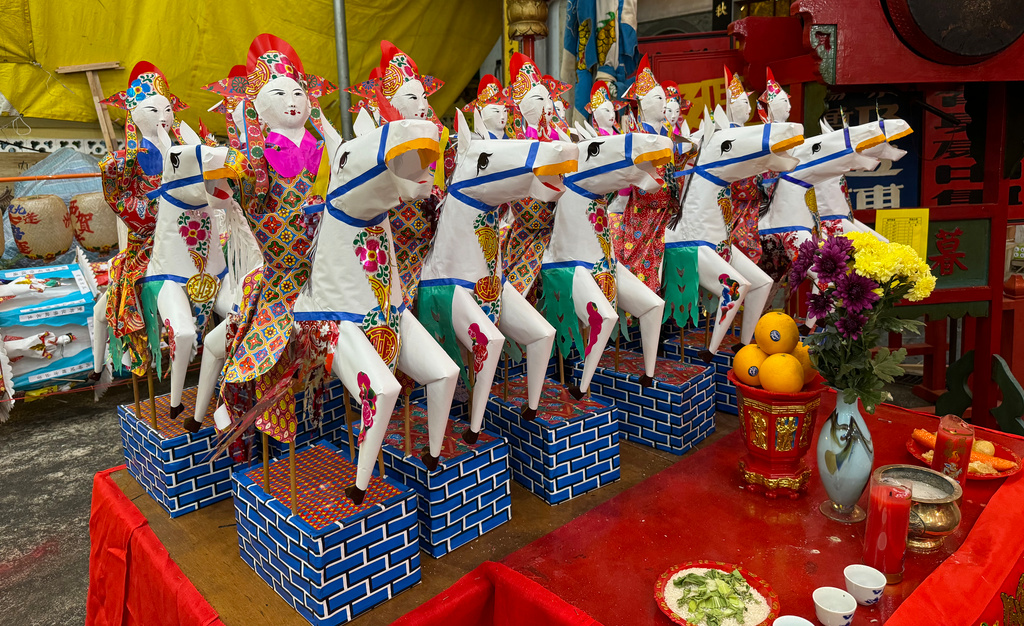 Decennial universal soul salvation during Singapore’s Hungry Ghost Month - Angela Sim depicts the ritual enactment of Mulian's life performed every ten years by Singapore's Chinese diaspora.
Decennial universal soul salvation during Singapore’s Hungry Ghost Month - Angela Sim depicts the ritual enactment of Mulian's life performed every ten years by Singapore's Chinese diaspora. Stories, theatre and worship: The sacred masks of Majuli - Aishani Gupta writes about the fearsome masks of Assam, a tradition passed down for five centuries.
Stories, theatre and worship: The sacred masks of Majuli - Aishani Gupta writes about the fearsome masks of Assam, a tradition passed down for five centuries. The art of Bahi Khata: India’s handwritten legacy of accounts and ancestry - Priyanka Kochar reflects on her ancestors' meticulous hand-bound account books
The art of Bahi Khata: India’s handwritten legacy of accounts and ancestry - Priyanka Kochar reflects on her ancestors' meticulous hand-bound account books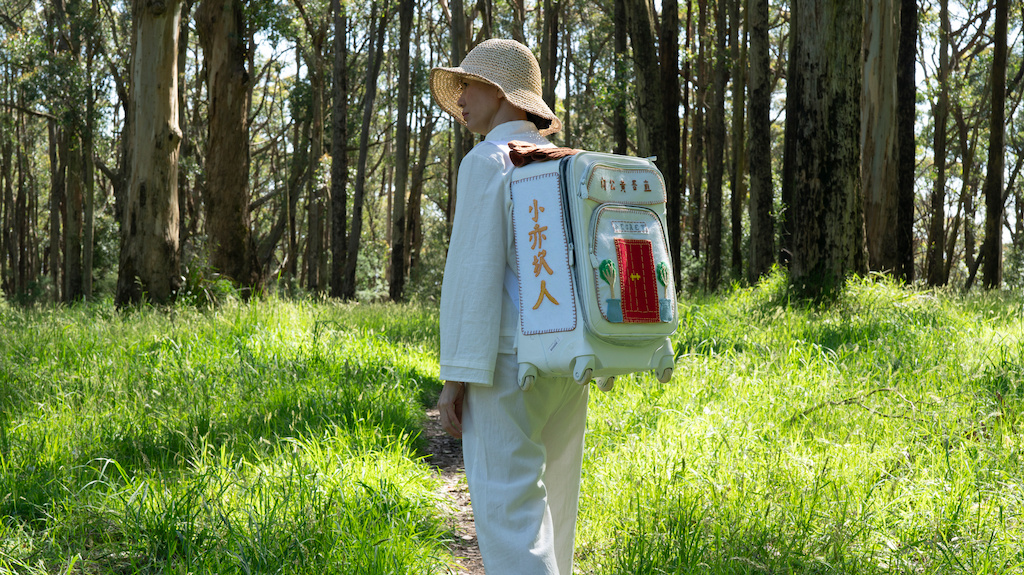 Mobile ancestral hall - Tammy Wong Hulbert journeys from her home on Wurundjeri country to the land of her ancestors in Siew Chek Hum village, southern China.
Mobile ancestral hall - Tammy Wong Hulbert journeys from her home on Wurundjeri country to the land of her ancestors in Siew Chek Hum village, southern China. Woven in stone: Bringing ancient Indonesia to life on the loom - Bernhard Bart writes about songket weaving inspired by stone statues from ancient Indonesia.
Woven in stone: Bringing ancient Indonesia to life on the loom - Bernhard Bart writes about songket weaving inspired by stone statues from ancient Indonesia. 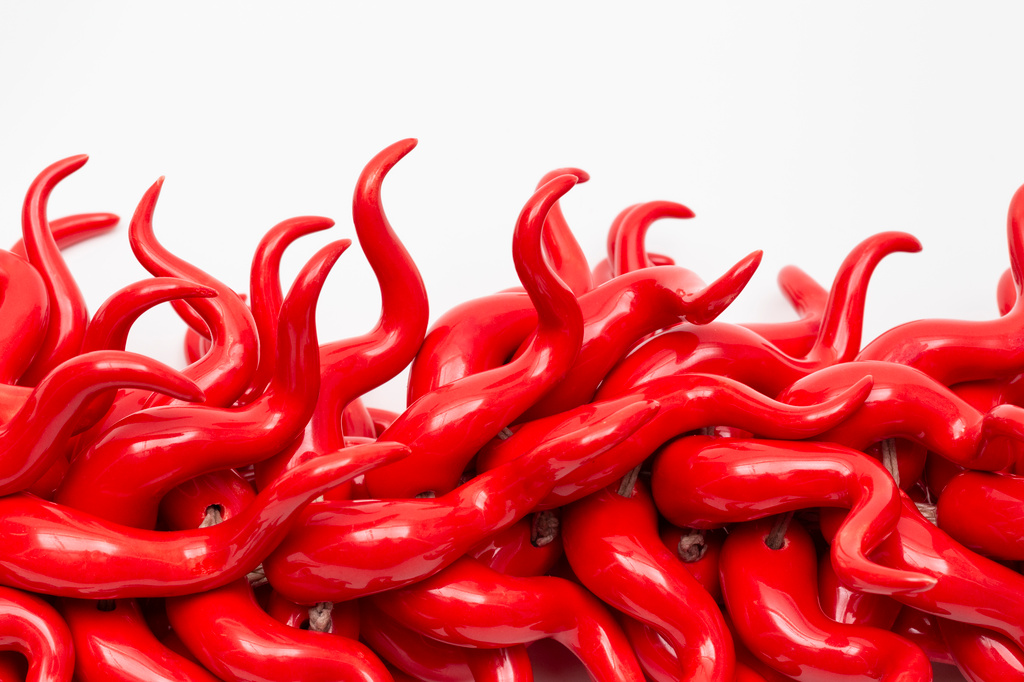 Nonna’s Abundant Protection from the Malocchio - Celine Babet recreates the cornicello protection charm of her Sicilian ancestors in vibrant ceramic clusters.
Nonna’s Abundant Protection from the Malocchio - Celine Babet recreates the cornicello protection charm of her Sicilian ancestors in vibrant ceramic clusters.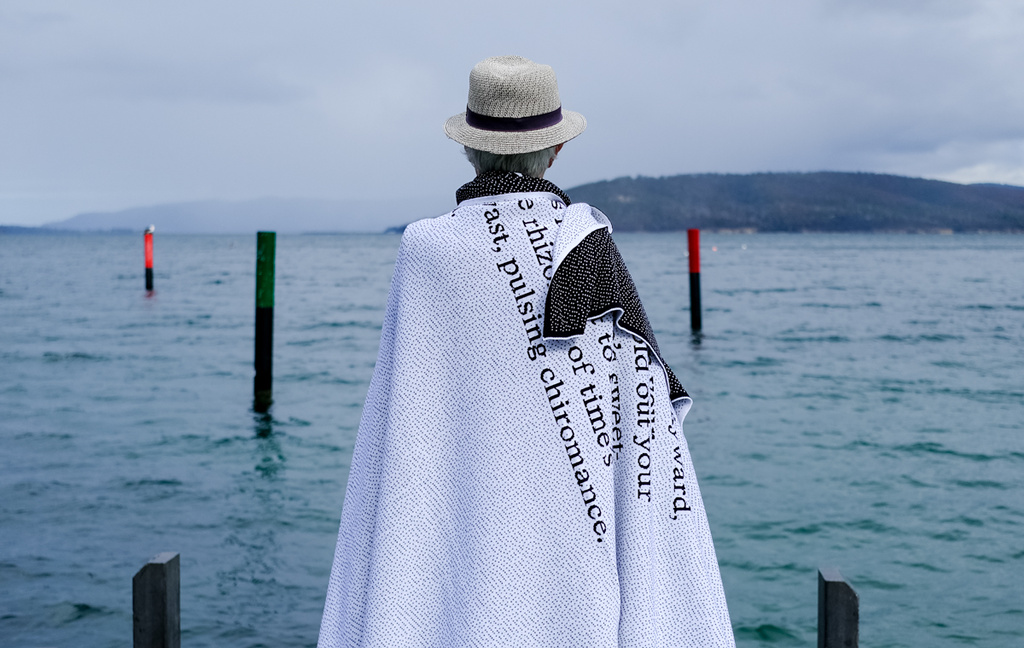 The Rest of Us: Soft publishing as an act of radical care - In a homage to bookbinding, the pages of this book are individually knitted as blankets to be read and used by readers across the world.
The Rest of Us: Soft publishing as an act of radical care - In a homage to bookbinding, the pages of this book are individually knitted as blankets to be read and used by readers across the world. Ramayana Reimagined: A tale with a thousand voices - Natasha Sarkar is inspired by the multiplicity of Ramayanas around the world.
Ramayana Reimagined: A tale with a thousand voices - Natasha Sarkar is inspired by the multiplicity of Ramayanas around the world. Ègbáliganza 2025: Traditional regalia honours of the ancestors - Emmanuel Solate documents a festival that celebrates the role of Lisabi Agbongbo Akala in freeing the Egba people.
Ègbáliganza 2025: Traditional regalia honours of the ancestors - Emmanuel Solate documents a festival that celebrates the role of Lisabi Agbongbo Akala in freeing the Egba people. The NFT Mother of God - Emma Cieslik writes about Beatrice Vigoni's pixelated homage to the Salvadorian icon, La Señora de la Paz.
The NFT Mother of God - Emma Cieslik writes about Beatrice Vigoni's pixelated homage to the Salvadorian icon, La Señora de la Paz.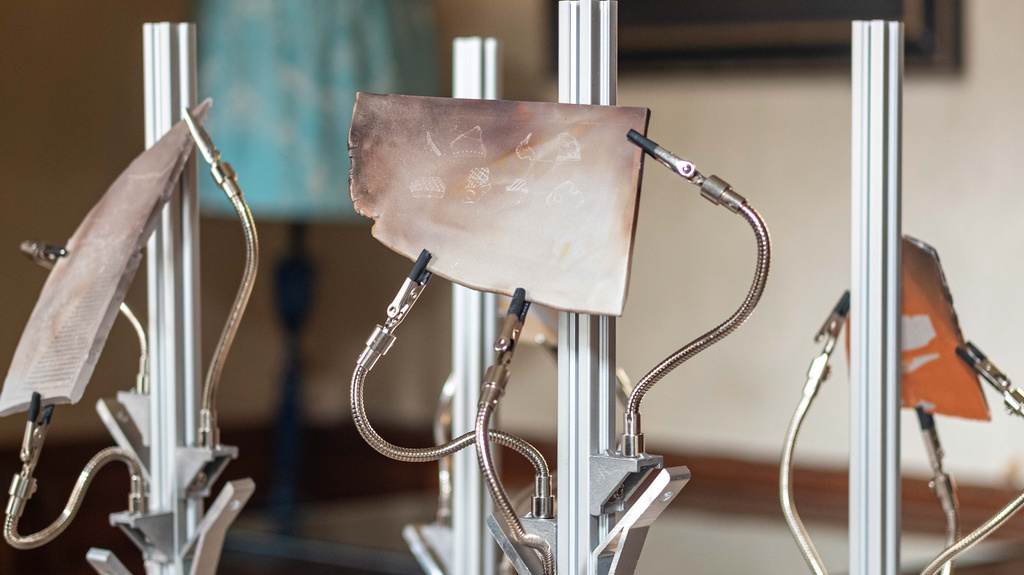 Data archeology in clay - Using data visualisation, Guillaume Slizewicz re-embodies archaeology back into clay fragments.
Data archeology in clay - Using data visualisation, Guillaume Slizewicz re-embodies archaeology back into clay fragments.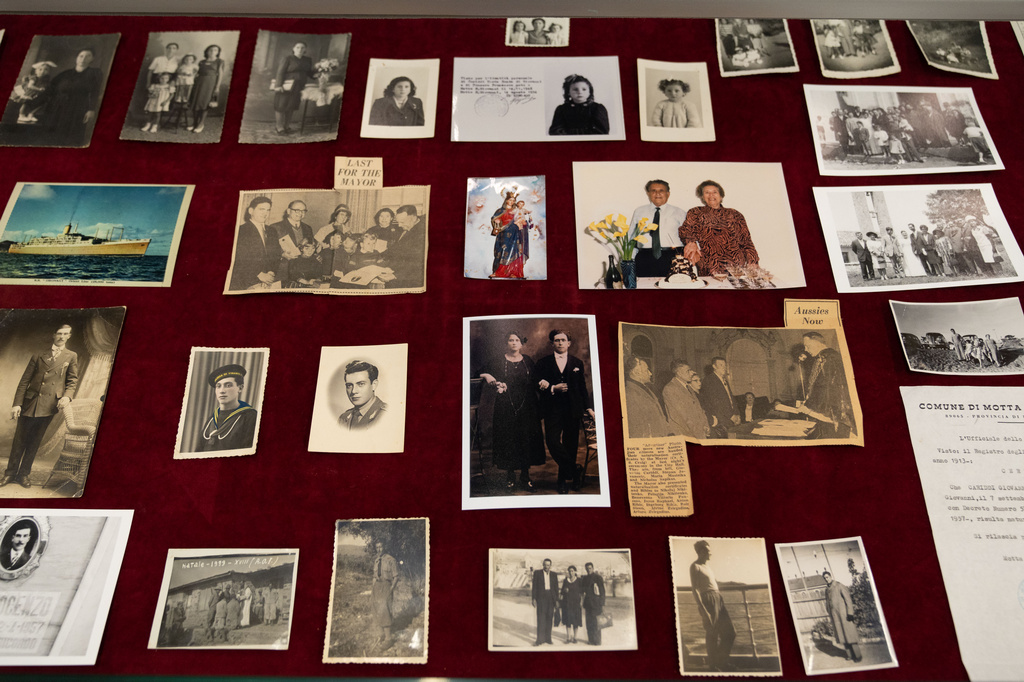 The fabric of migration - Lella Cariddi gathers the material history of her Italian forebears in honour of their journey across the world.
The fabric of migration - Lella Cariddi gathers the material history of her Italian forebears in honour of their journey across the world.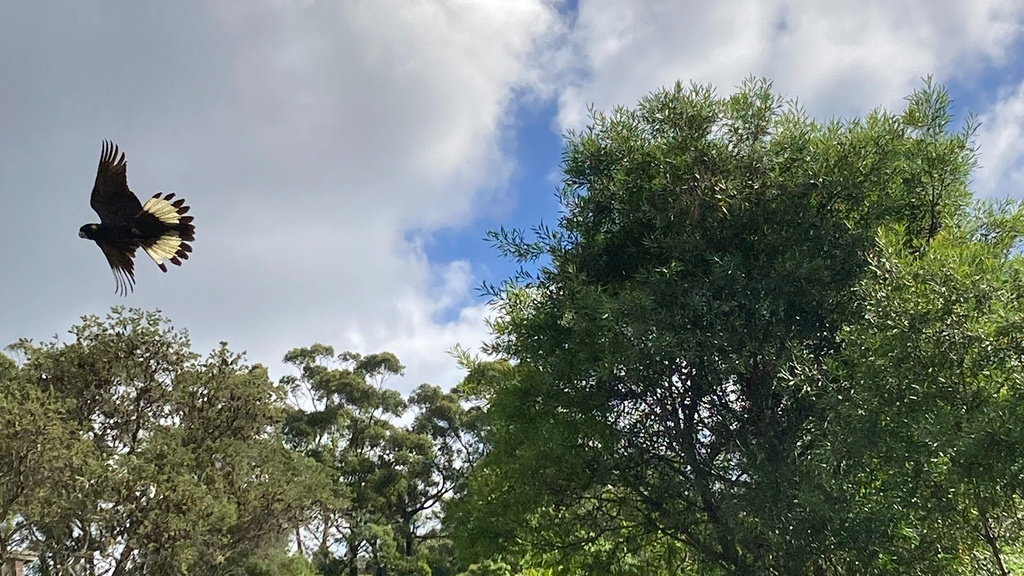 In search of the fili: A workshop for encountering ancestors - For Colm McNaughton, rituals are a powerful container for accessing lost ancestral connections
In search of the fili: A workshop for encountering ancestors - For Colm McNaughton, rituals are a powerful container for accessing lost ancestral connections Laurie Paine ✿ Weaving a lost homeland - Laurie Paine draws a thread from Palestinian ancestors to a new life on the other side of the world, where she now mourns the tragedy in her homeland.
Laurie Paine ✿ Weaving a lost homeland - Laurie Paine draws a thread from Palestinian ancestors to a new life on the other side of the world, where she now mourns the tragedy in her homeland. Pashmina: An ancestral legacy in the machine age - Fiba Arif and Irfan Ahmad argue that introducing mechanical looms is important to keeping the tradition of pashmina shawls accessible and alive.
Pashmina: An ancestral legacy in the machine age - Fiba Arif and Irfan Ahmad argue that introducing mechanical looms is important to keeping the tradition of pashmina shawls accessible and alive.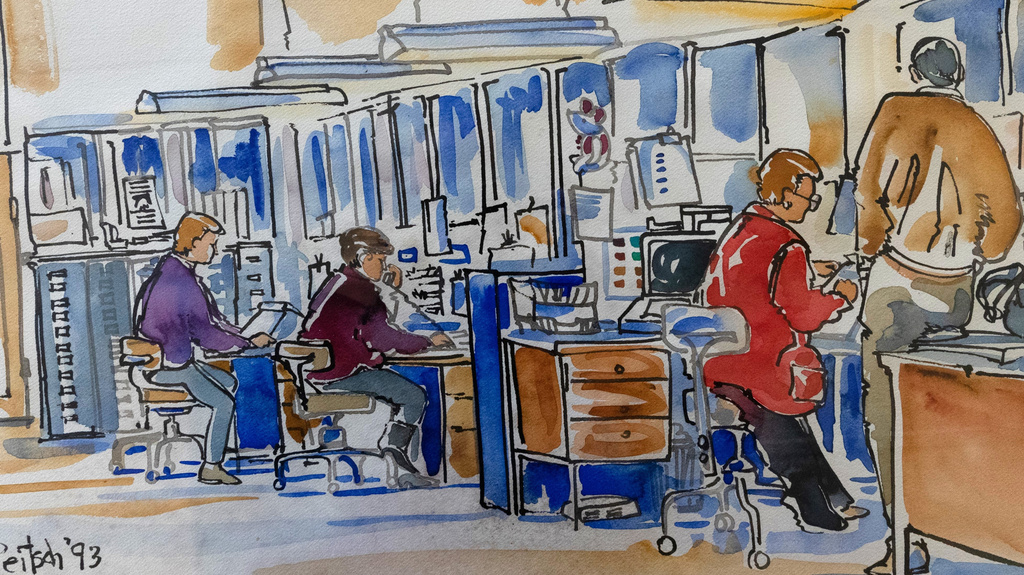 Verweban: A textile homage to the “somebodies” in textile factories - Flossie Peitsch returns to the factory, whose workers she had previously honoured in paintings, with textile works of her own reflecting a shared humanity.
Verweban: A textile homage to the “somebodies” in textile factories - Flossie Peitsch returns to the factory, whose workers she had previously honoured in paintings, with textile works of her own reflecting a shared humanity. A driftwood testament - Dean Greeno continues his ancestors' practice of using dead trees as memorials.
A driftwood testament - Dean Greeno continues his ancestors' practice of using dead trees as memorials.
